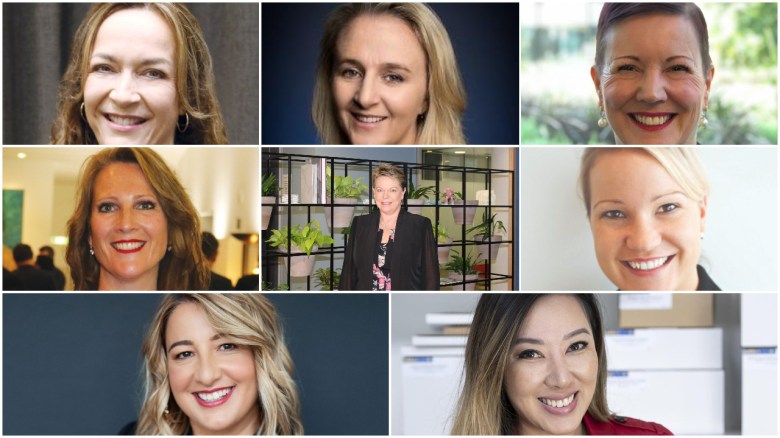
Leading by example, education and removing the bias which may prevent the print industry from being considered a career path for the next generation were some of the key suggestions raised by a selection of Australian print industry leaders.
Sprinter and the Printer Media Group – which publishes Sprinter.com.au, Australian Printer, ProPrint and Pro.Pack.pro and organises the ProPrint Awards, would like to thank those who participated in this special report for International Women’s Day 2022.
The printing industry is brimming with amazing women leaders who bring fresh and forward-thinking perspectives on the future. Happy International Women’s Day!
Women in Print have also now announced dates for this year’s breakfasts – to book tickets, click here.

Check out what some of our leading women leaders had to say:
Debbie Burgess, co-director, Bright Print Group:
Do you think bias makes it difficult for women to move ahead in the print industry?
There is bias in many industries, not just printing. It is a global issue that transcends countries, religions and sexuality. For women it is most obvious when you consider positions that have been predominantly occupied by men whether at a trade level, or a board level. Of course, there are many reasons why there are not more women in certain industries and roles. However, in my experience and according to research, traditionally male dominated industries such as printing, have a difficult time attracting talented women, or promoting them when they do present. This is to the detriment of the print industry which needs to strive towards greater diversity, equity and inclusivity.
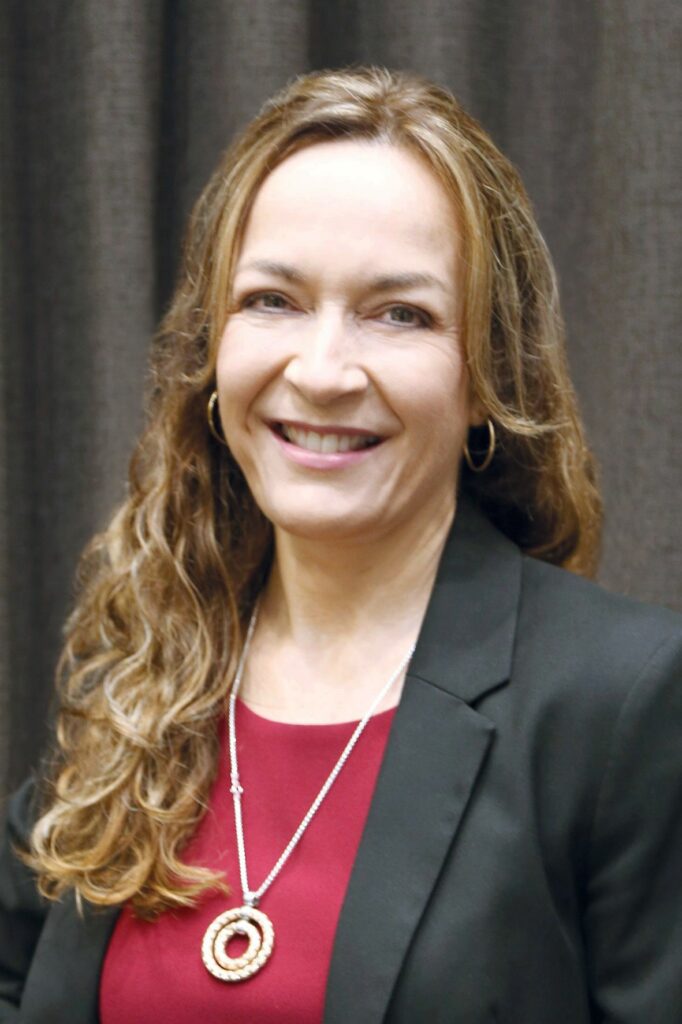
How has it changed in your time in the industry?
At an executive level I believe there have been huge improvements in the perceived value of women in the industry. We have had more women hold senior executive and CEO positions in the last decade then I recall in the 20 years prior to that. Movements such as Women in Print have helped raise the awareness of the volume and commitment of women in the industry. Women such as Susan Heaney and Kellie Northwood have also inspired. It is incredibly pleasing to see women embrace an industry that has always been known for its blokeyness!
What are your views on the best way to break the bias?
The biases of all of us are internal, engrained, inherited and something that only a consciousness and awareness can alter. It takes time and understanding to break any bias. Bias stems from incredibly complex value systems and cultural beliefs. Simply and practically the best way I believe is for women to continue to support women, and for companies to really live their equal opportunity statements not just pay them lip service. It will only take a profound movement at a societal level to break the bias and that is not going to happen any time soon, so in the meantime, we all need to look closely at our own biases and take the appropriate actions to dispel those biases one person at a time.
Sue Threlfo, general manager – production and industry print – Konica Minolta:
Do you think bias makes it difficult for women to move ahead in the print industry?
Thankfully this is changing. The industry was dominated by men who had completed trade apprenticeships. Thirty or forty years ago this wasn’t an avenue readily available to women, so it is taking longer for the gender balance to equalise. Now days these trade skills are becoming less important, and sales skills and business acumen are required to run any business which easily opens the door for more women.
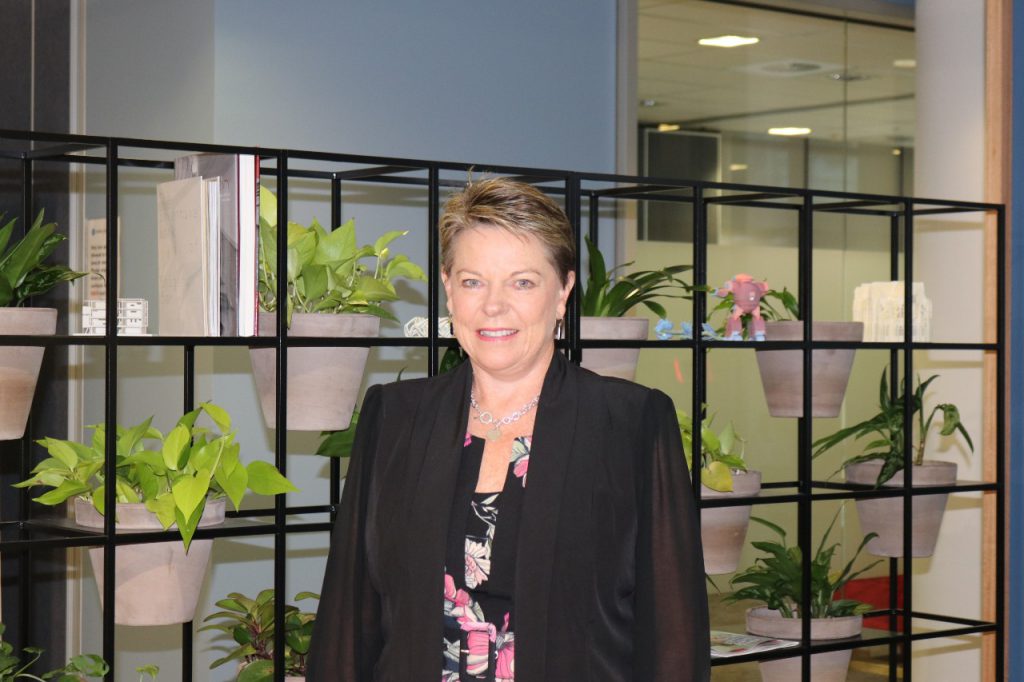
How has it changed in your time in the industry?
Fortunately things have changed significantly throughout my 35 years in the industry. Although it is slow, I now see more women taking leading roles in printing companies and industry related fields. Years ago I would often be the only woman at an industry event or golf day. Now I am delighted when I see more women involved in all aspects of the industry. However, there needs to be more role models to show young women that there is a future for them in the industry.
What are your views on the best way to break the bias?
I don’t think anyone can say they are truly unbiased. We need to all challenge our own thoughts processes to make sure we are mindful of our own bias when making decisions. Breaking the bias means we have to challenge existing norms. Sometimes these are so ingrained, we might not even call them into question. It is also important for women to support other women until we have an equal playing field.
Kirsten Taylor, creative print director, Taylor’d Press:
Do you think bias makes it difficult for women to move ahead in the print industry?
I feel very supported in my role and that of the industry roles that I have held and continue to hold. Equality is forever developing, and I feel like the most relevant issue is of the experience one holds rather than the gender of the person in that role. Representation of women in leadership roles should continue to thrive and seeing an increase of women to board roles would be nice. I think that if you can dream it, you can achieve it.
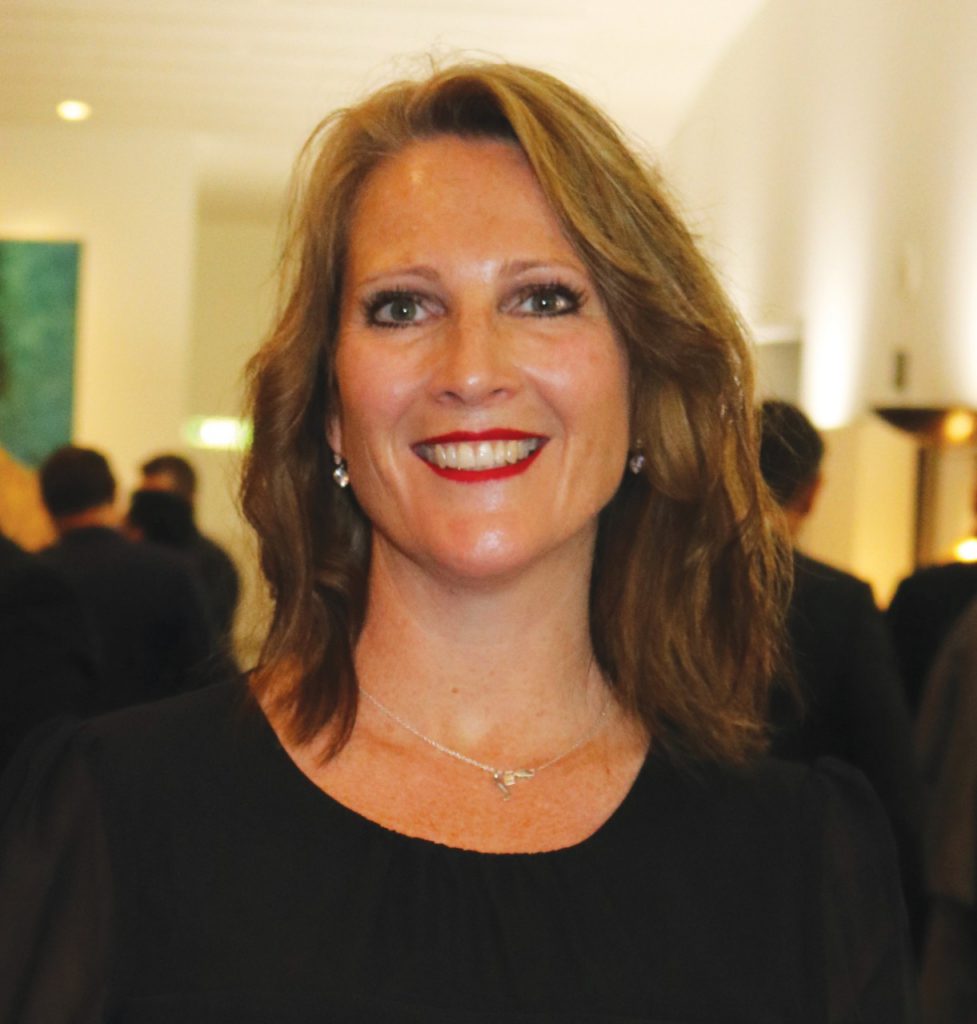
How has it changed in your time in the industry?
I feel very grateful to have been offered the opportunities I have had the privilege of undertaking in our industry. 18 years ago, I was just a girl working in the office and fast forward, with hard work, dedication, determination and a little bit of stubborn I am lucky enough to have some major roles in our industry. They are certainly not handed to you; you have to want them, and you have to be dedicated and work from a place that benefits the industry and the greater good.
What are your views on the best way to break the bias?
Believe in yourself and your capabilities. Support the amazing women around you. Don’t buy into any hype that you are not capable if you believe that you are. Talk down any imposter syndrome you may be harbouring. Challenge the thinking around you. Nothing comes from comfort zones. I don’t look at myself as being compared to others based on gender, just how I undertake the role and that the work I am doing benefits the industry.
Kellie Northwood, CEO, The Real Media Collective:
Do you think bias makes it difficult for women to move ahead in the print industry?
Bias, in all forms, makes it difficult for everybody, women included, to advance. Bias applies stereotypes or misperceptions and can pigeon-hole people in ways that benefit no one. Not the person who is experiencing the bias and certainly limiting the opportunity the person of bias could potentially experience if providing more open-mindedness.
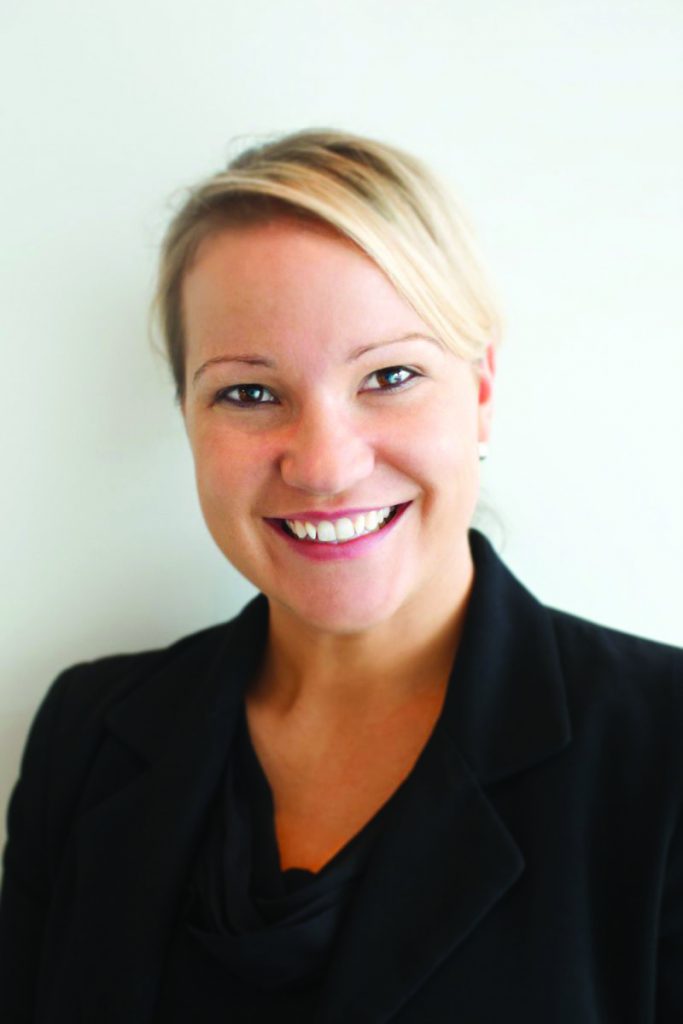
We are more aware now of racial and sexual bias across our industry and must apply the same lens to gender bias. Many senior executives present an awareness, however systemic bias still requires much thought. Most Boards across our industry are dominated by white, heterosexual, upper-middle class, Christian men (TRMC Board included). This must change as it perpetuates an ongoing cycle of thought, and ultimately ongoing cycle of bias. Women still share stories with me about being hired and comments being made such as ‘I hope you don’t fall pregnant soon’ by male managers, women who when they offer to buy a male colleague a coffee the comment is ‘Isn’t that sexist, if I let you make me a coffee?’ or ‘You’ve got children, you probably don’t want to travel in your role’. These clichés are bias, being seen as a woman first and a successful professional second is bias, and we must challenge this together for a richer professional community across our industry.
How has it changed in your time in the industry?
Many executives or leaders through ESG or CSR training workshops have become far more aware in their communication and operational styles, however we do still have a way to go. I personally believe every Board member or senior manager across the industry should complete not only a Governance and Finance course, but also a Diversity and Inclusivity program to build richer levels of awareness and education across this important area. It is not only important for every individual, but sound commercial practice to offer more inclusive working environments. The research is overwhelming in this regard, Mckinsey&Company’s Delivering through Diversity tracking company performance since 2014, reveled in 2020 that companies in the top quartile (good programs) for gender diversity were 25% more likely to have above-average profitability than companies in the lower quartiles. If you want to be more profitable and successful, if you want to offer an attractive place to work for new employees, have a happier more co-operative team within your workplace and have reduced sick leave – embrace a strong diversity program.
What are your views on the best way to break the bias?
Rampant and malicious prejudice is completely unacceptable, that is a given. Gender, or any other, bias, is often applied without people understanding they are applying the bias or without malicious intent. So together we, men and women, have a wonderful opportunity to educate each other. Women to point out when they see bias in an inclusive discussion and men, to listen when that discussion is raised. I have had many discussions with great men across our industry in a similar fashion and 9 out of 10 of those discussions have been incredibly healthy with great positive learning outcomes for all. All of us carry bias in some form, from our upbringings, our societal experiences, our work-life, home-life etc., learning how we apply these biases and when they are restrictive to others is something we can all benefit from.”
Mel Ireland, national president, LIA:
Do you think bias makes it difficult for women to move ahead in the print industry?
This is an interesting question. I think it is more ‘does bias impact women choosing the print industry as a career option?’ I don’t think moving ahead within the industry is an issue at all. The print sector is no different to any one of the other 14 manufacturing subsectors – at the moment there is approx. 29% of the manufacturing sector, across Australia, represented by women, the most of which are in senior or management roles. There is less than 10% that are on the ‘floor’ in manufacturing. I think most of the roles within the print sector that are filled by women are perceived as the traditional female role – admin, table hands, pre-press. The workforce in the print industry is aging, this is going to pose a more significant challenge in diversifying the gender, as well as age in the sector.
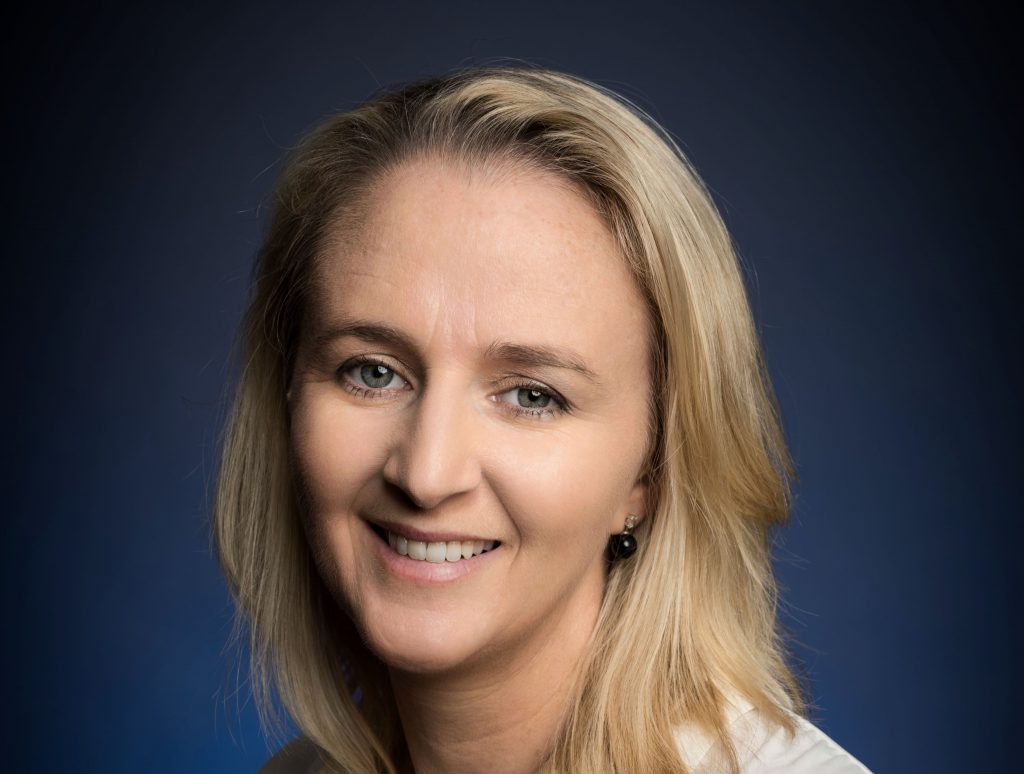
How has it changed in your time in the industry?
I don’t think the diversity of the industry has changed all that much to be honest. When I started in the industry about 30 years ago, I walked into an apprenticeship as a print machinist off the back of accessibility to a pre-vocational course. What has changed is the ability for newcomers (alpha-gens) to get a taster of the industry in a manner that offers them an all-round understanding of the opportunities available to them if they stay. Back then I was only 1 of 3 female print apprentices out of a cohort of approximately 250 the year that I finished my apprenticeship. I’m not aware of any other female print apprentices at the moment. I know through the LIA in Qld we had a lady in 2018 that was a web print apprentice. That was the year that the LIA QLD Graduate of the year awards, which included all four apprenticeship levels across all five trades, had 19 nominated apprentices and 11 of them were women.
What are your views on the best way to break the bias?
I am not a fan of quotas. I think the most effective way to increase diversity across the sector is to have an effective attraction and retention strategy for the sector or business. More importantly we need to #breakthebias in the education system. Unfortunately teaching staff, through no fault of their own, are often unaware of the huge potential for students to enter this sector. We also need to see an effective apprenticeship drive, such as the one of ‘Future print’ that had dedicated individuals that solely focused on working with schools and industry to increase the number of apprentices. ‘If I can see her, I can be her’…we need to be able to expose those females that are still actively engaged I the industry to other young women.
Jenny Berry, member services excecutive, Ai Group:
Do you think bias makes it difficult for women to move ahead in the print industry?
I don’t believe the print industry is any different to others – there has been fairly significant advances made recently, probably over the last 8 – 10 years however I believe we still have a way to go in recognizing the value women bring to management roles. My firm belief is that women ought to be supporting other women during their career progression – by way of mentoring, coaching and empowering. Women are typically reluctant to put their hand up for promotion and/or recognition and we need to support each other in this.

How has it changed in your time in the industry?
Markedly! My first decade in print was around the mid-eighties where women were only seen in support roles or junior reporting roles (in my case). I felt a shift during the late 90s, early 2000s when more women were engaged in typically male dominated roles. We’ve still a way to go though.
What are your views on the best way to break the bias?
Continue to highlight the value and different skill sets women can bring to any role. Initiatives such as IWD help raise awareness of the gender inequity in traditional male dominated industries/roles. such initiatives should be encouraged and promoted widely. I believe the bias will become less evident in the future as our young people have a completely different mind-set when it comes to what men and women can or can’t do. Young women in particular are driving this change – I am hopeful for the future of my granddaughters.
Kirsty Woodhead, owner, Breen Printing:
Do you think bias makes it difficult for women to move ahead in the print industry?
I find as with most of my female peers, that when presented with roadblocks, barriers or just being told straight up that we cannot do something, it becomes a driving factor to overcome the challenge we are presented with. Personally, I have been able to achieve my goals using this drive and had the support to do so.
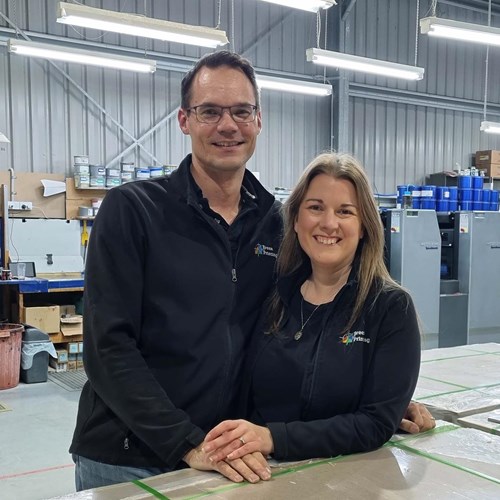
In recent years as I have moved into a leadership role, I have observed within the industry that our voices are not always heard, our ideas are dismissed and when opportunities arise there is resistance in welcoming females with emerging ideas. So, whilst it can be made difficult for women, we continue to say it louder and challenge the bias presented to us today.
How has it changed in your time in the industry?
As the daughter of a printer, I have worked in print since I was 15, and have witnessed the changes as I have personally grown with them. There has been a significant improvement in what was known to be a male dominated industry in the late 90’s and I think that its survival has a lot to do with embracing diversity. When I was an apprentice in early 2000, I was encouraged to grow, and my ambitions were nurtured by many industry leaders during the early years of my career. Whist it was still very bias driven at the time, leaders were noticing that diversity was the key to moving forward and I am grateful to have been introduced to the industry at this stage. In many cases welcoming women in print has helped the industry survive and our input is now seen as a valued contribution by most.
What are your views on the best way to break the bias?
For women, just keep doing what we do best and not letting the bias influence our values or the way we approach our jobs. Women are an essential voice in this industry that is always evolving, as we offer a passion and drive that will keep print relevant. By continuing to support organisations that give women a voice within the industry, like Women in Print, and promote diversity within key industry associations, opportunities will continue to flourish. Its hard work, but we are now equals in a resilient industry that has needed to move forward with the constant changes that have challenged its survival for the last 20+ years.
Kelsey Wade, graphic designer, printDNA:
Do you think bias makes it difficult for women to move ahead in the print industry?
It is the indifference of history and our evolution that entices the question ‘Can a woman really do that job? Isn’t that a man’s job?’ Historically, many forms of labour and technical work required men’s strength and tough grit, but the ideology is changing, and I believe a dawning revolution of ‘women power’ is upon us. We women are proving that we are just as capable of doing the hard yakka, if not to a better standard.
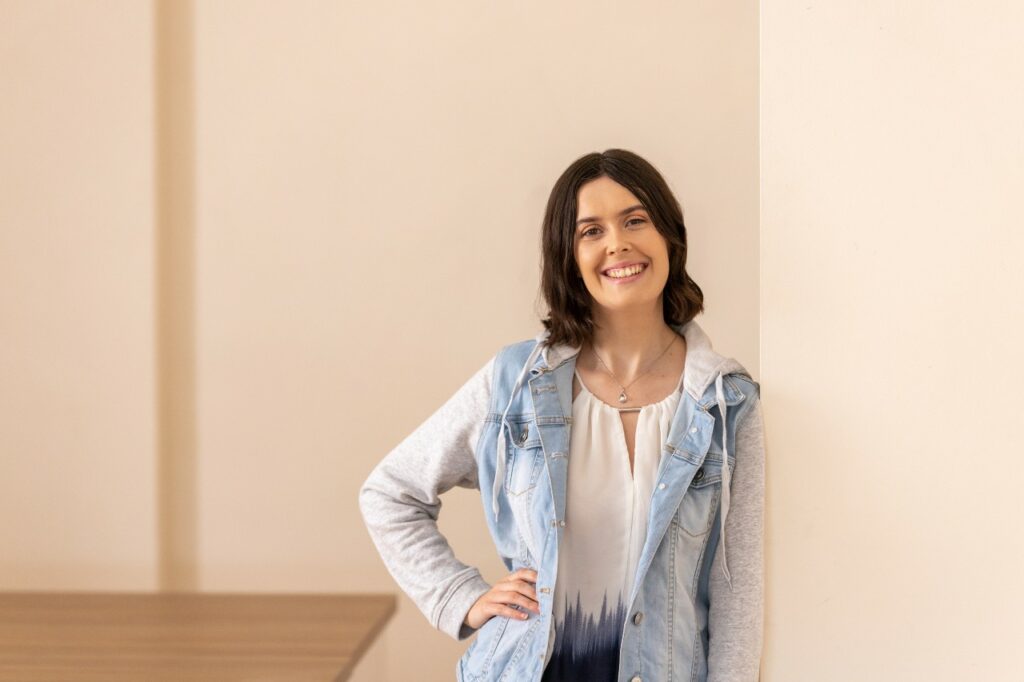
How has it changed in your time in the industry?
I started in the print industry in a rather uncommon environment. Most print settings you would expect a higher ratio of men to women running the operations, but at my workplace the women run the show, with a ratio of 5:1. This platform of ‘women power’ gave me steady ground to rise up to the challenge and prove myself as a hardworking and valuable worker. It’s a proven method, where in a typically male-dominated industry, even women can break the barriers of gender bias and win gold medals and earn recognition.
What are your views on the best way to break the bias?
I have emerged in an era where bias is being squashed by successful women like me. Truth be told, I know of more successful female print achievers than I do male, and perhaps that is because women are working hard to be recognised and respected to combat the bias surrounding our industry. I’m a firm believer that this inequality is being squashed bit-by-bit because of women, like me, who are gradually rising up to the task and claiming proudly, ‘I can do that, and I’ll do it better.’
Sandra Duarte, owner, Sandra Duarte Consulting:
Do you think bias makes it difficult for women to move ahead in the print industry?
The printing industry has always been predominantly male across most positions. However, we are seeing more women in the areas of Customer Service, Administration, Pre-press and Design. Unless the Executive leaders are willing to make a conscious decision and effort at training, promoting and encouraging more women to the industry, it will continue to remain male dominated.
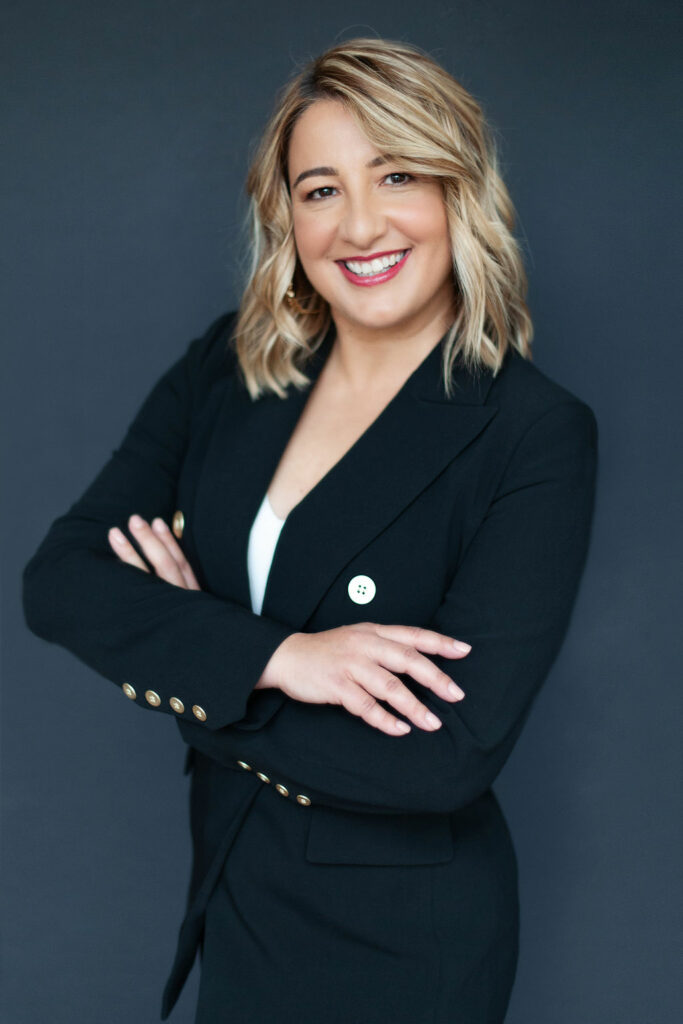
How has it changed in your time in the industry?
I have seen an increase over the last 10 years for women in the finishing areas of table hands, packing and even despatch. Women are natural organisers and have a good attention to detail which has seen positive outcomes in these areas. Women are also increasing in the areas of Sales, Customer Services, and Account Management. This offers diversity with client relationships which can be very beneficial for business.
What are your views on the best way to break the bias?
I think we need to see more women in Executive leadership positions where they are able to make decisions and develop strategies to engage more women to this great industry and offer positions and training right through from printing operators, finishing, production management right through to Senior Management, CEO’s and Board Directors. The top ranks are still currently male dominated, and they need to consider promoting and hiring more female contributors to this industry. The Women in Print do a great job supporting and encouraging the women in our industry. To break the bias, we need to consider and extend the same level of opportunities, reward and respect that men are given, to be given the same to women. This would create a better balance to the industry. Women bring a different set of eyes and perspective which if embraced can create the perfect diversity every business needs to succeed.
Carmen Ciappara, national advertising manager, PMG
Do you think bias makes it difficult for women to move ahead in the print industry?
No, I don’t believe so.
How has it changed in your time in the industry?
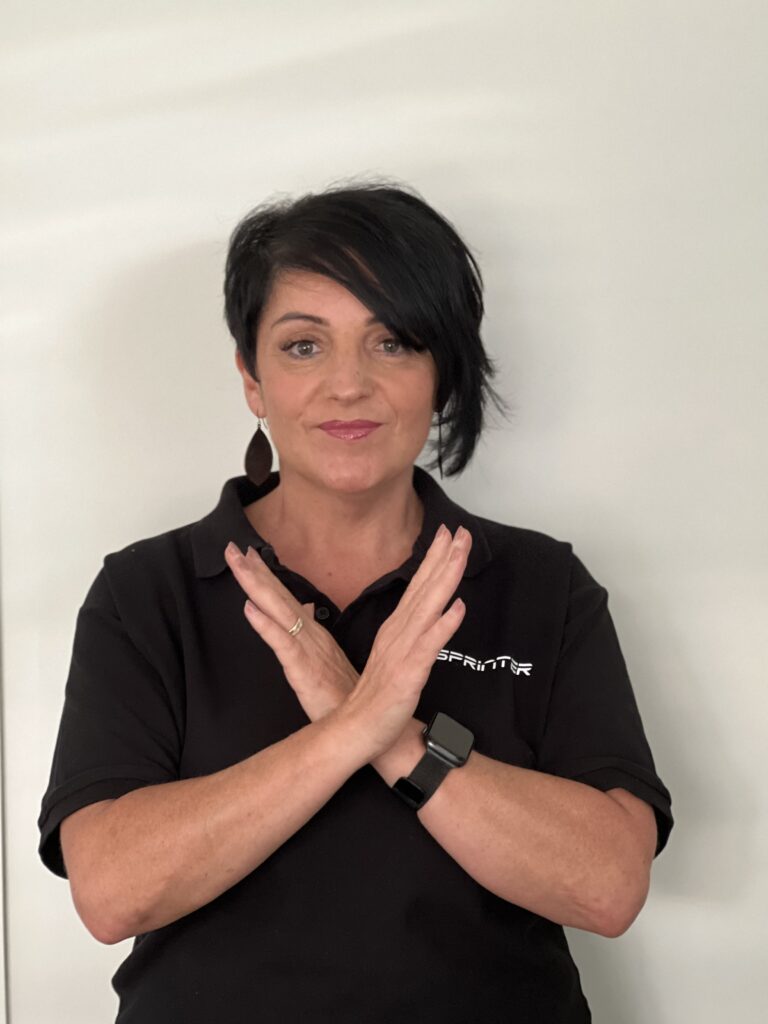
In my past 36 years I have seen many women building their confidence and diversify their skills in this industry e.g., from working in an office or print room floor to moving into a management role and have successfully started their own print businesses. The Women In Print events which first started in 2007 have also helped encourage and built this confidence in woman to evolve in this industry.
What are your views on the best way to break the bias?
Society needs to become more conscious of their thoughts and actions, for myself I try and practice exercising compassion with everyone I engage with, regardless of their age, gender, education, sexuality and keeping in mind that all individuals are equal, if this practice is happening collectively in society, it will certainly break the bias and we can live in a united world.
Meqa Smith, The Unforgettable Agency:
Do you think bias makes it difficult for women to move ahead in the print industry?
I think there is bias in every industry but that it exists within the individuals that hold it, as such this could be based on gender, race, religion, age, weight or education level not within an industry per se. Bias is based on stereotyping people and associating that set of characteristics with everyone in that group and that these beliefs come from our personal life experiences which is why it’s impossible to eliminate bias for any reason in any industry.
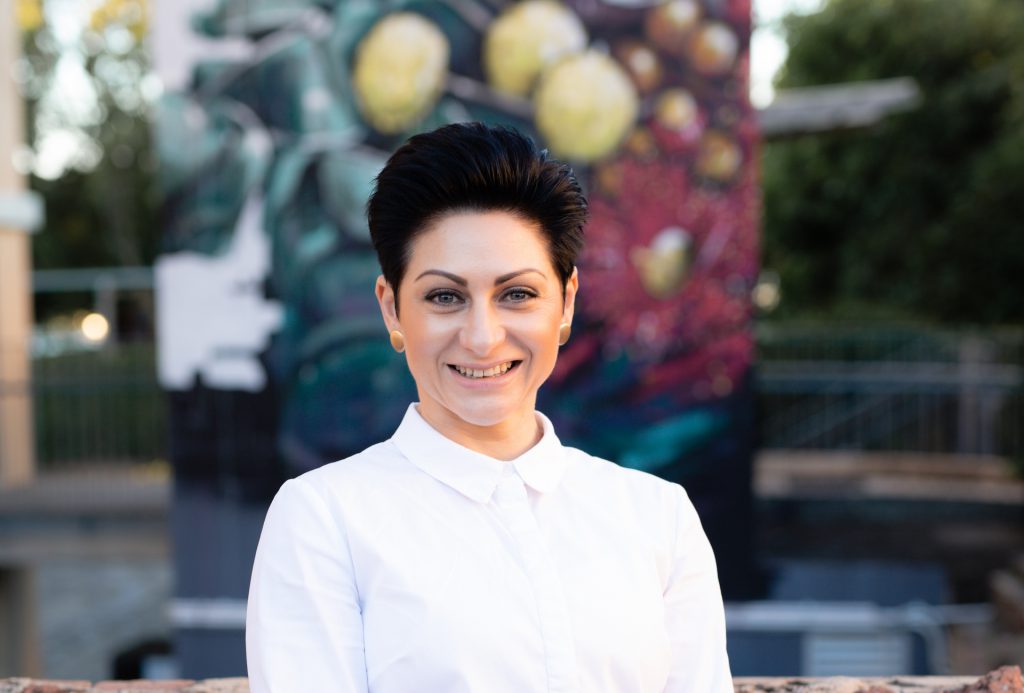
What are your views on the best way to break the bias?
I don’t think you can ‘break the bias’ but I think we can focus on the timeless truth that we are all united by our shared humanity no matter our background or gender, no matter our level of seniority or our industry. We each have hopes, dreams, fears and weaknesses. We each deserve an opportunity to prove ourselves without being limited by another person’s biased beliefs about what we can offer based on one aspect of who we are, be that gender, race or education level.
Deborah Corn, Intergalactic Ambassador to The Printerverse:
What are your views on the best way to break the bias?
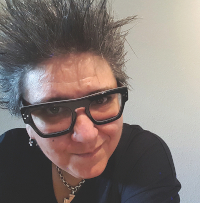
‘Break the Bias’ is an interesting concept to me. I do acknowledge bias exists, and that I am not without my own. I also know that we need to speak of these things and learn from each other and grow through our collective experience. However, during the last 13 years working in this industry and leading 8600+ global members of Girls Who Print, I have concluded the best course of action for women in print is not to try and get a seat at a table, but to create our own through mentorship, partnership, education, and networking.
Cultivated community, sharing opportunities, growing hiring managers and vice presidents and CEO’s. That is how you Break the Bias… stack the deck with empowered women!
Nina Nguyen, founder, Pakko:
Do you think bias makes it difficult for women to move ahead in the print industry?
Whether it relates to gender, race or religion bias is never productive or profitable for any industry or workplace. A positive and engaged work culture is dependent on mutual respect. My personal focus is to create a culture of inclusivity and diversity at Pakko and within the wider manufacturing industry.
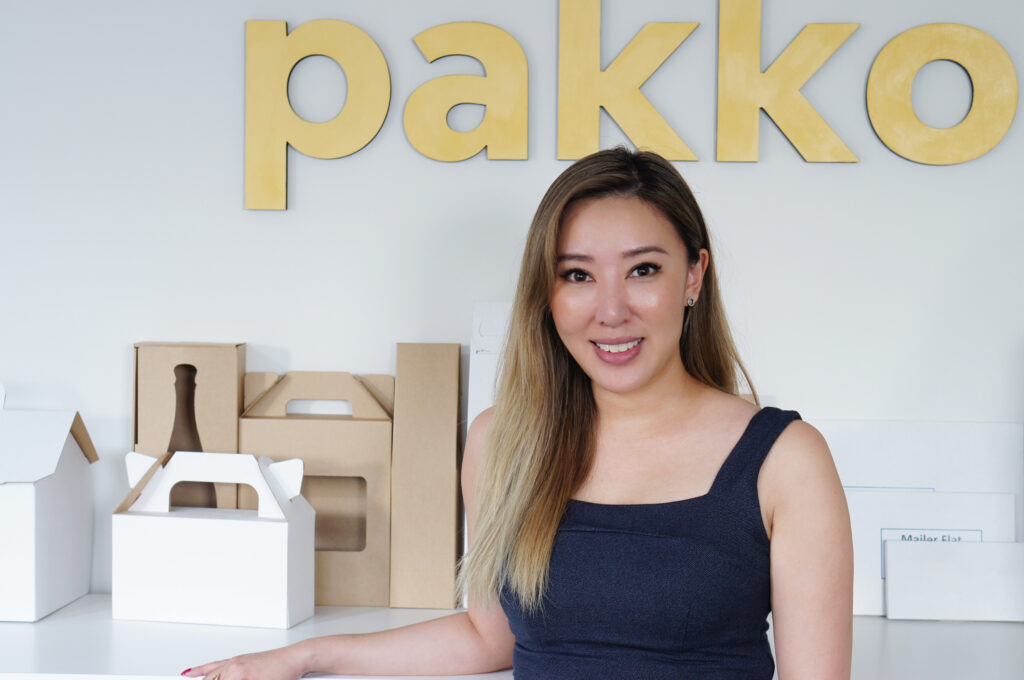
How we diminish the role of bias in our own workplace and industry is up to each of us. By simply accepting responsibility and giving value to other voices we can impair the impact of bias.
As a female founder from a culturally diverse background my own personal journey within the packaging industry has greatly influenced our team culture at Pakko.
Together, we have created a culture that celebrates our differences and welcomes women into all areas of the packaging process. Today, women make almost 50% of the team here at Pakko.
Our diverse team consists of many nationalities, races and religions. Many are from non-English speaking backgrounds. When I look at our team, I see people like me and people not so like me! And that’s what makes us so special.
If we can all make small changes in our industries, our workplaces and our homes we can positively impact and influence change where bias and inequality exist.
How has it changed in your time in the industry?
I started out in packaging and manufacturing 10 years ago and at that time, I struggled to find female colleagues and associates.
Female founders and CEOs of packaging and manufacturing companies (let alone ones that came from a culturally diverse background) were far and few between. Although, I did not view this as a deterrent. I had a dream. I worked hard, stayed focused and set up Pakko. Like every other industry at the time, there was an uneven distribution of gender and cultural inequity within the industry.
Since then, we have seen cultural awareness flow from our communities into our workplaces.
Today, we acknowledge and recognise women, gender, cultures, religion and people from non-English speaking backgrounds. We may not be perfect, but our communities have changed and so too has the culture of work. Acceptance, responsibility and increased tolerance all help us to see each other and build equitable workplaces.
What are your views on the best way to break the bias?
Education and leading by example are the keys to inhibiting deep-seated bias patterns.
We can start by encouraging education programs at school and as leaders we have a responsibility to lead with the vision of inclusion and to share our experiences with the next generation of leaders.
Gender, race and cultural bias can impact our daily lives and those of the people who live in our community and who come to work with us every day. It’s up to us to be part of the solution and make changes towards a positive, equitable future.
Women in Print have announced the 2022 Breakfast dates:

Comment below to have your say on this story.
If you have a news story or tip-off, get in touch at editorial@sprinter.com.au.
Sign up to the Sprinter newsletter

An awesome article Sheree, well done!
I thoroughly enjoyed reading the responses from all of the ladies you interviewed, all great people that our industry is blessed to have. Fantastic.
As a child I watched Mum work three jobs including working within our Group. Her effort to support Dad, the business and my brother and I was just remarkable. Mums attention to detail, work ethic and tenacity was an inspiration for many great people in our Group.
The Lamson Group are proud to sponsor Women In Print, a great industry initiative!